
 Data Structure
Data Structure Networking
Networking RDBMS
RDBMS Operating System
Operating System Java
Java MS Excel
MS Excel iOS
iOS HTML
HTML CSS
CSS Android
Android Python
Python C Programming
C Programming C++
C++ C#
C# MongoDB
MongoDB MySQL
MySQL Javascript
Javascript PHP
PHP
- Selected Reading
- UPSC IAS Exams Notes
- Developer's Best Practices
- Questions and Answers
- Effective Resume Writing
- HR Interview Questions
- Computer Glossary
- Who is Who
How To Compare Two Strings For Similarity Or Highlight Differences In Excel?
In this article, we will learn how to compare two adjacent strings in excel for identifying differences or similarities. Two methods have been explained in this article as mentioned below.
Compare two strings for similarities using a formula.
Compare and highlight two strings for similarities or differences using VBA Code.
Compare Two Strings for Similarities using a Formula
Step 1 ? A sample data has been taken as shown below to compare the strings of two columns.
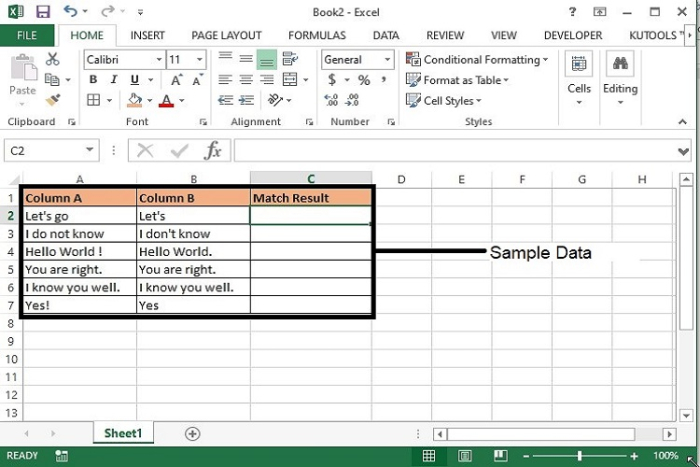
Step 2 ? Now, enter the following formula in Match Result column and drag the same till the last row to which data comparison is required and press enter.
=EXACT(A2, B2)
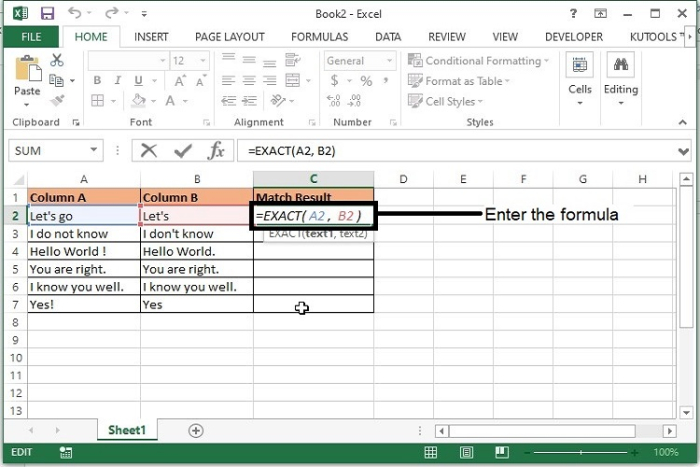
Note ? In the formula, A2 and B2 are the cells of the comparing strings. The FALSE result indicates that the compared strings are different, and the TRUE result depicts the similar strings?
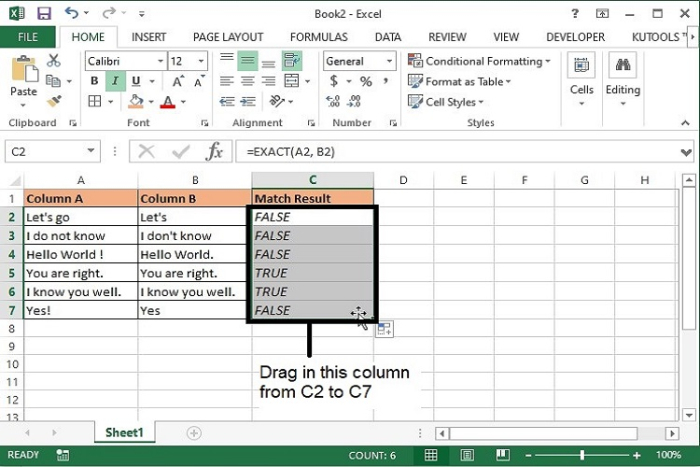
Formula Syntax Description
Argument |
Description |
|---|---|
EXACT(text1, text2) |
|
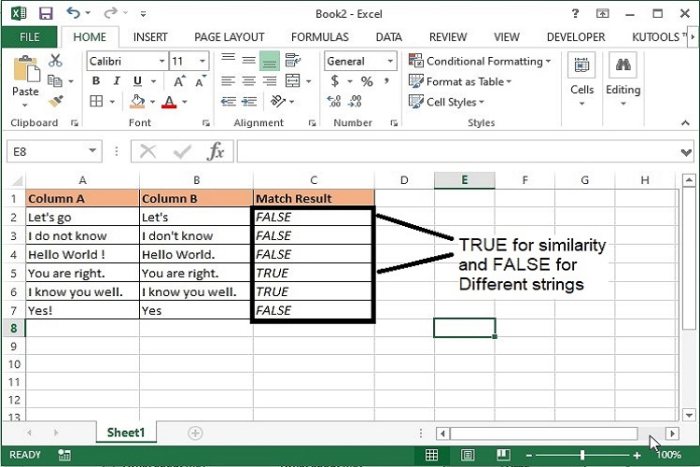
Compare and Highlight Two Strings for Similarities or Differences using VBA Code
Step 1 ? Press Alt+F11 keys from the keyboard and the Microsoft Visual Basic for Applications window will open.
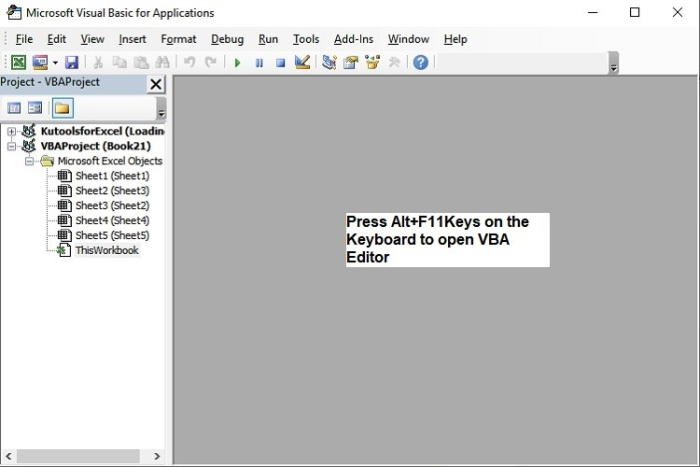
The above editor can also be opened using the Developer's tab as shown below?

Step 2 ? In the Microsoft Visual Basic for Applications window, double click ThisWorkbook available in the Project panel.
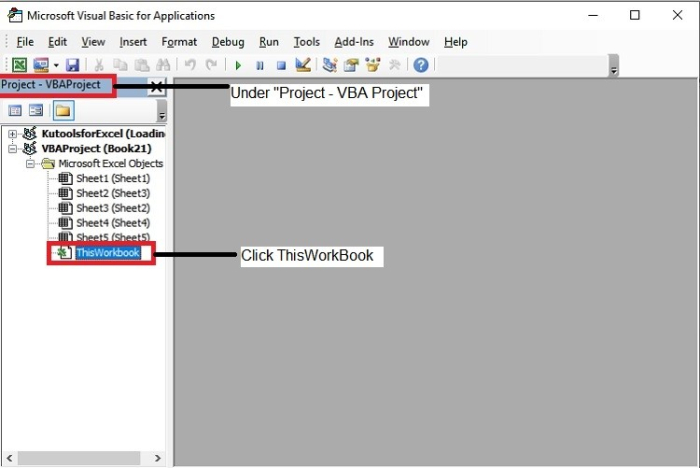
Step 3 ? Now copy the below VBA code and enter the same in the ThisWorkbook (Code) window.
Sub highlight()
Dim xRg1 As Range
Dim xRg2 As Range
Dim xTxt As String
Dim xCell1 As Range
Dim xCell2 As Range
Dim I As Long
Dim J As Integer
Dim xLen As Integer
Dim xDiffs As Boolean
On Error Resume Next
If ActiveWindow.RangeSelection.Count > 1 Then
xTxt = ActiveWindow.RangeSelection.AddressLocal
Else
xTxt = ActiveSheet.UsedRange.AddressLocal
End If
lOne:
Set xRg1 = Application.InputBox("Range A:", "Kutools for Excel", xTxt, , , , , 8)
If xRg1 Is Nothing Then Exit Sub
If xRg1.Columns.Count > 1 Or xRg1.Areas.Count > 1 Then
MsgBox "Multiple ranges or columns have been selected ", vbInformation, "Kutools for Excel"
GoTo lOne
End If
lTwo:
Set xRg2 = Application.InputBox("Range B:", "Kutools for Excel", "", , , , , 8)
If xRg2 Is Nothing Then Exit Sub
If xRg2.Columns.Count > 1 Or xRg2.Areas.Count > 1 Then
MsgBox "Multiple ranges or columns have been selected ", vbInformation, "Kutools for Excel"
GoTo lTwo
End If
If xRg1.CountLarge <> xRg2.CountLarge Then
MsgBox "Two selected ranges must have the same numbers of cells ", vbInformation, "Kutools for Excel"
GoTo lTwo
End If
xDiffs = (MsgBox("Click Yes to highlight similarities, click No to highlight differences ", vbYesNo + vbQuestion, "Kutools for Excel") = vbNo)
Application.ScreenUpdating = False
xRg2.Font.ColorIndex = xlAutomatic
For I = 1 To xRg1.Count
Set xCell1 = xRg1.Cells(I)
Set xCell2 = xRg2.Cells(I)
If xCell1.Value2 = xCell2.Value2 Then
If Not xDiffs Then xCell2.Font.Color = vbRed
Else
xLen = Len(xCell1.Value2)
For J = 1 To xLen
If Not xCell1.Characters(J, 1).Text = xCell2.Characters(J, 1).Text Then Exit For
Next J
If Not xDiffs Then
If J <= Len(xCell2.Value2) And J > 1 Then
xCell2.Characters(1, J - 1).Font.Color = vbRed
End If
Else
If J <= Len(xCell2.Value2) Then
xCell2.Characters(J, Len(xCell2.Value2) - J + 1).Font.Color = vbRed
End If
End If
End If
Next
Application.ScreenUpdating = True
End Sub
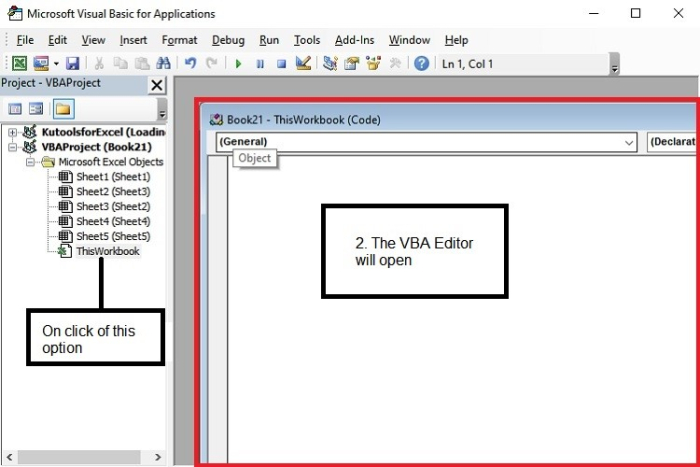
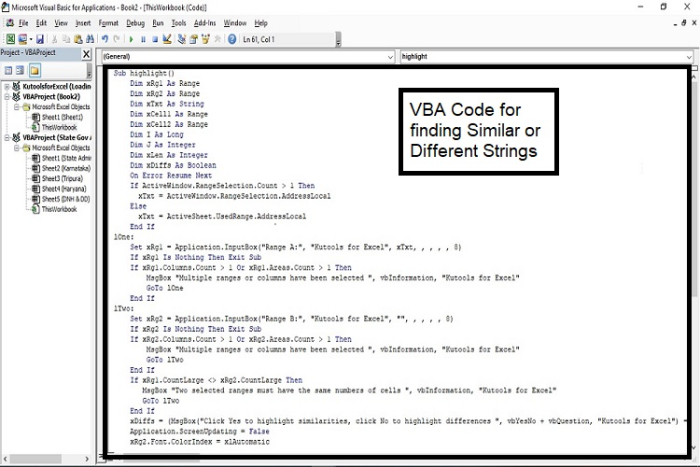
Step 4 ? Once the code is entered, press Alt+Q keys in the Keyboard to close the Microsoft Visual Basic for Applications window.
Step 5 ? Next, save the file in the format as, Excel Macro?Enabled Workbook.
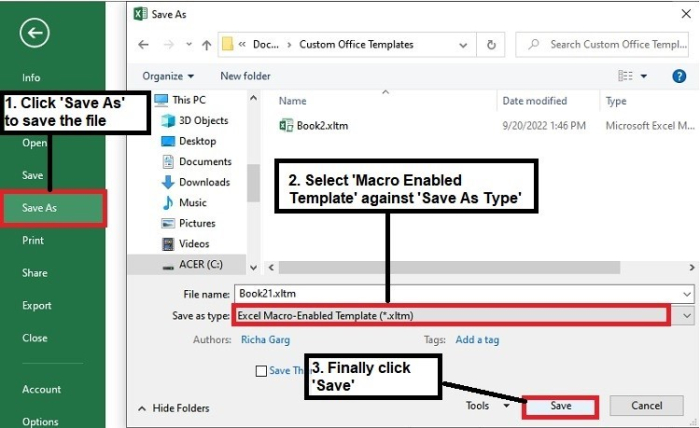
Step 6 ? Now press Alt+F8 to run the code. The below prompt will open?
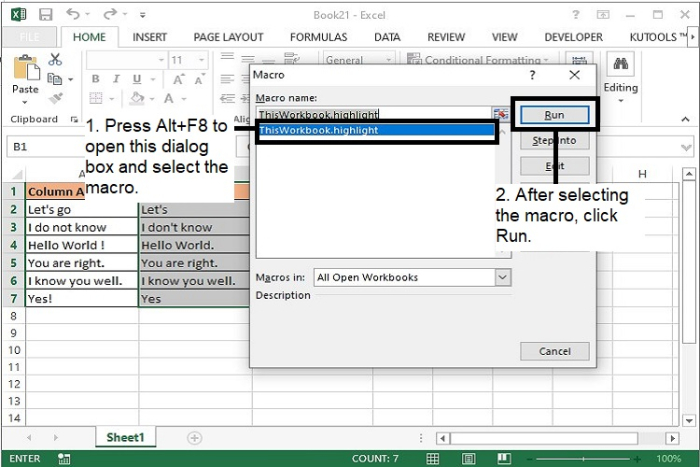
Step 7 ? Select the macro name and click Run.
Step 8 ? The first Kutools for Excel dialog box will open. Here, select the first column of text strings that you need to compare, and then click the OK button.
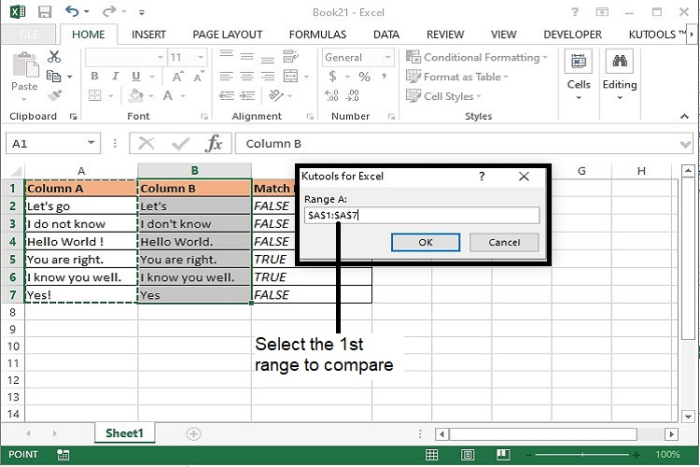
Step 9 ? Next, the second Kutools for Excel dialog box opens to select the second column strings, and click the OK button.
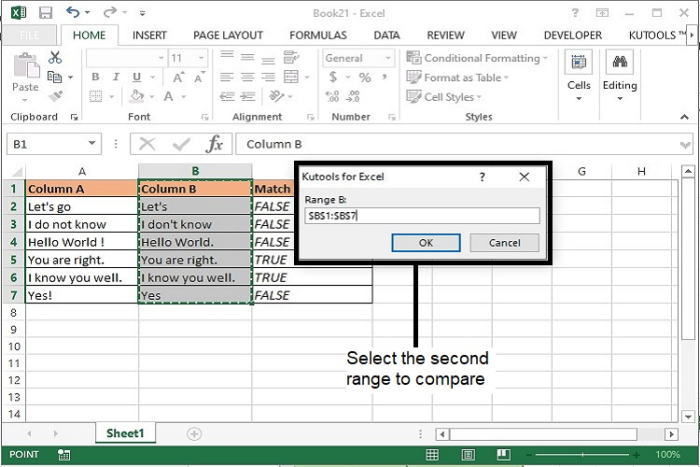
Step 10 ? After that a new Kutools for Excel dialog box opens. Here. if you want to compare strings for similarities, then click Yes and if you want to highlight the differences of the strings, click No in the below screenshot.
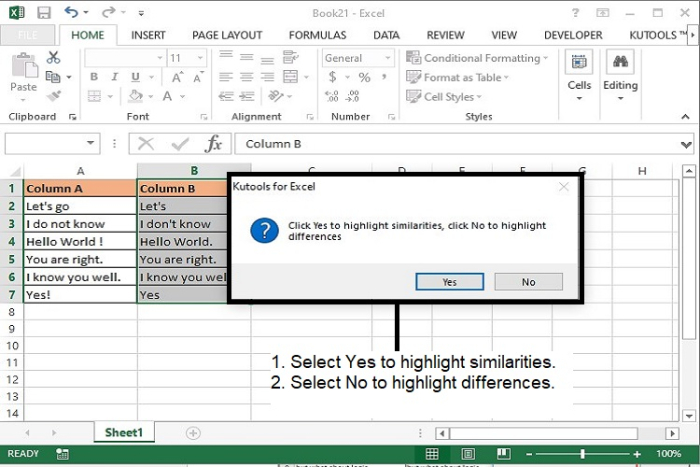
Step 11 ? If selected Yes, the similar strings will be highlighted as following.
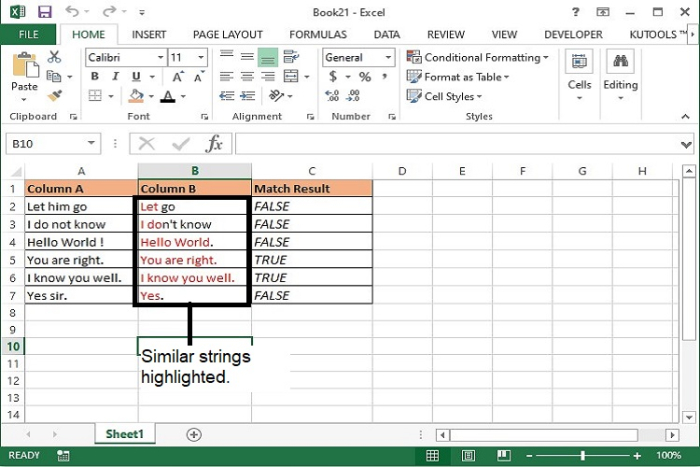
Step 12 ? If selected No, the different strings will be highlighted as following.
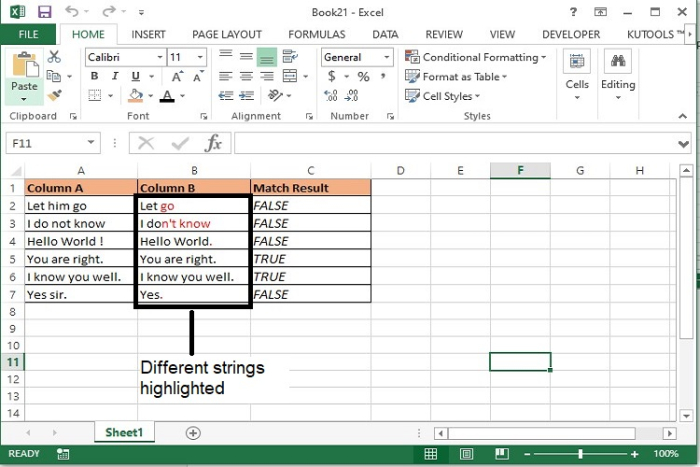
Conclusion
Hence, we have learned two methods to identify the different and similar strings in an excel data. Please note that, the VBA code is limited to identify some special characters only. For example, it cannot compare the strings containing apostrophe mark and exclamation mark.
